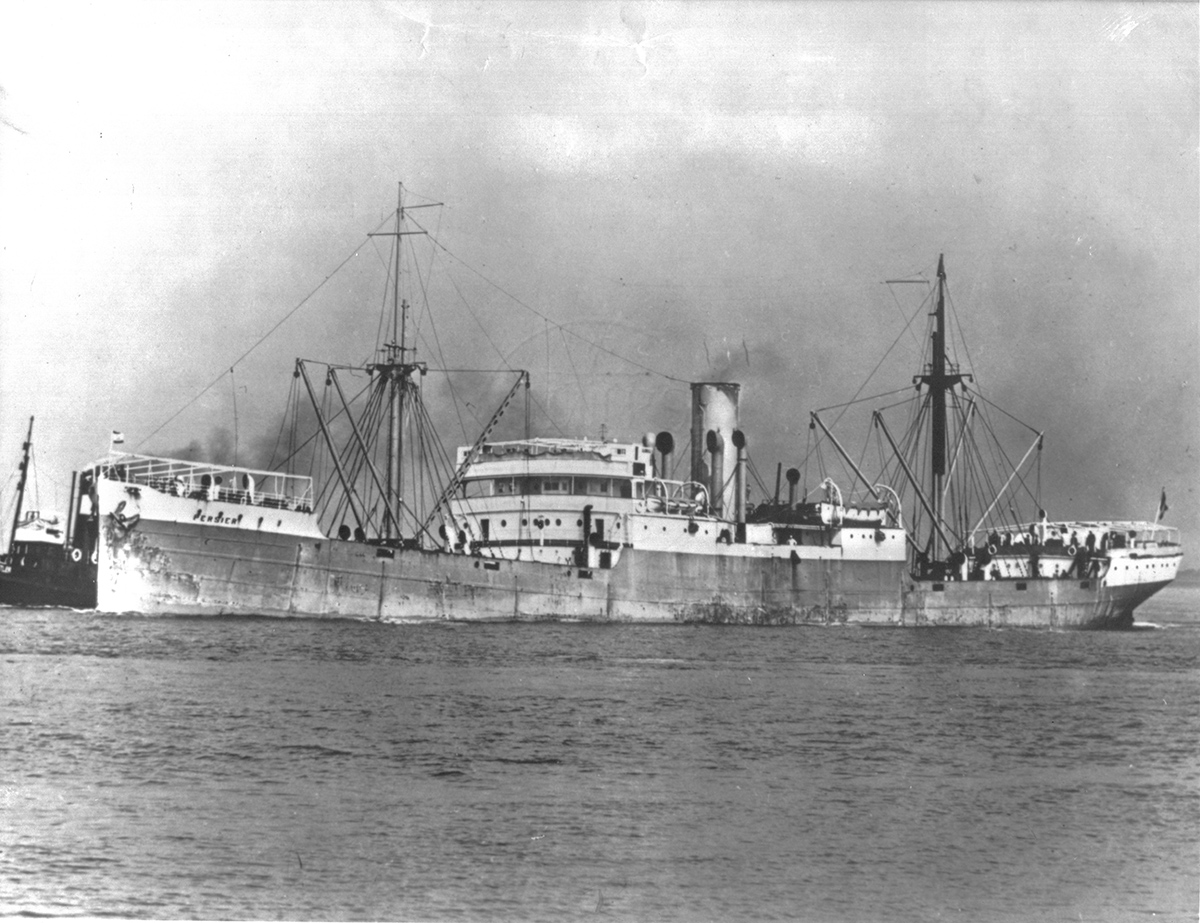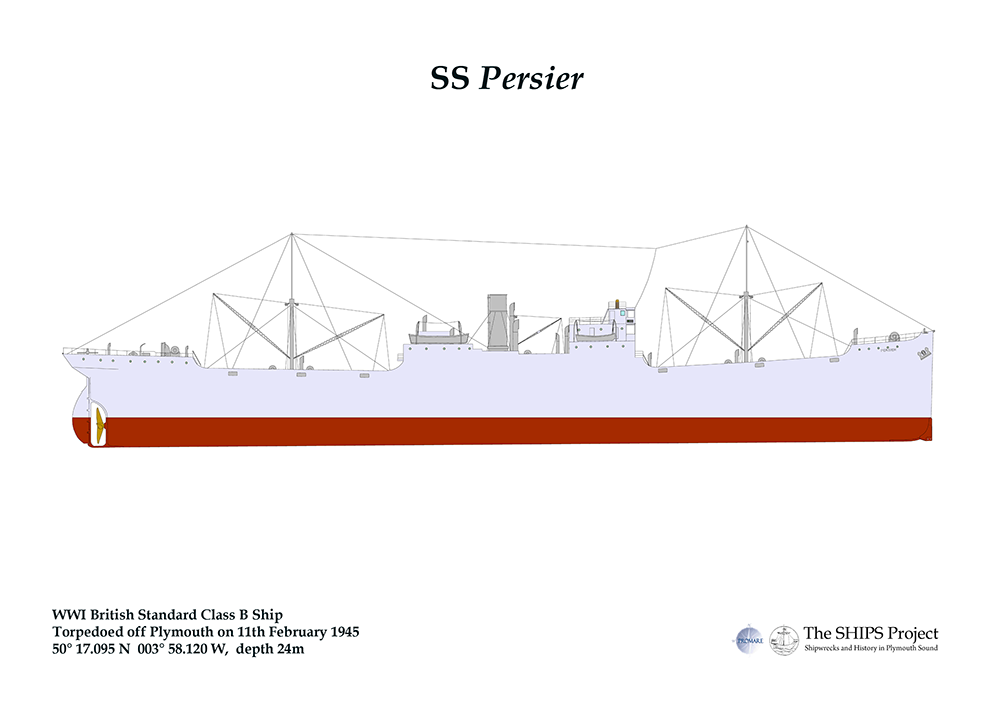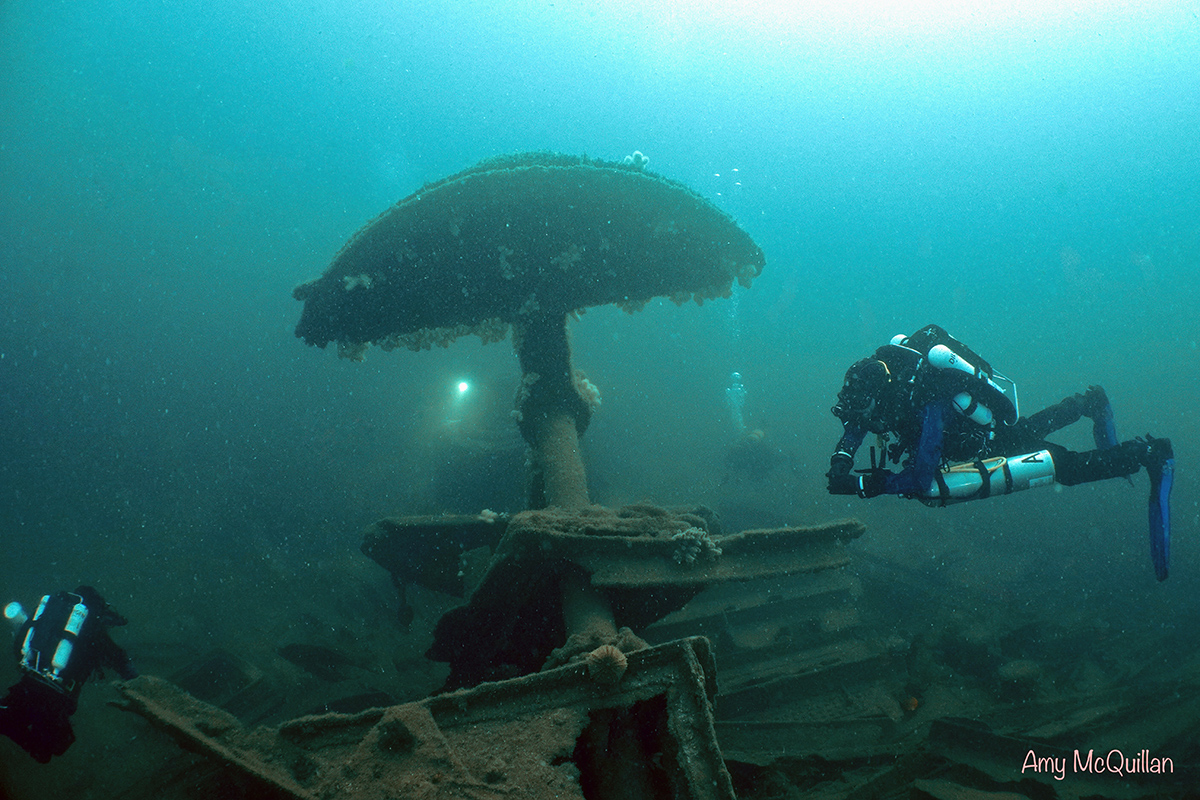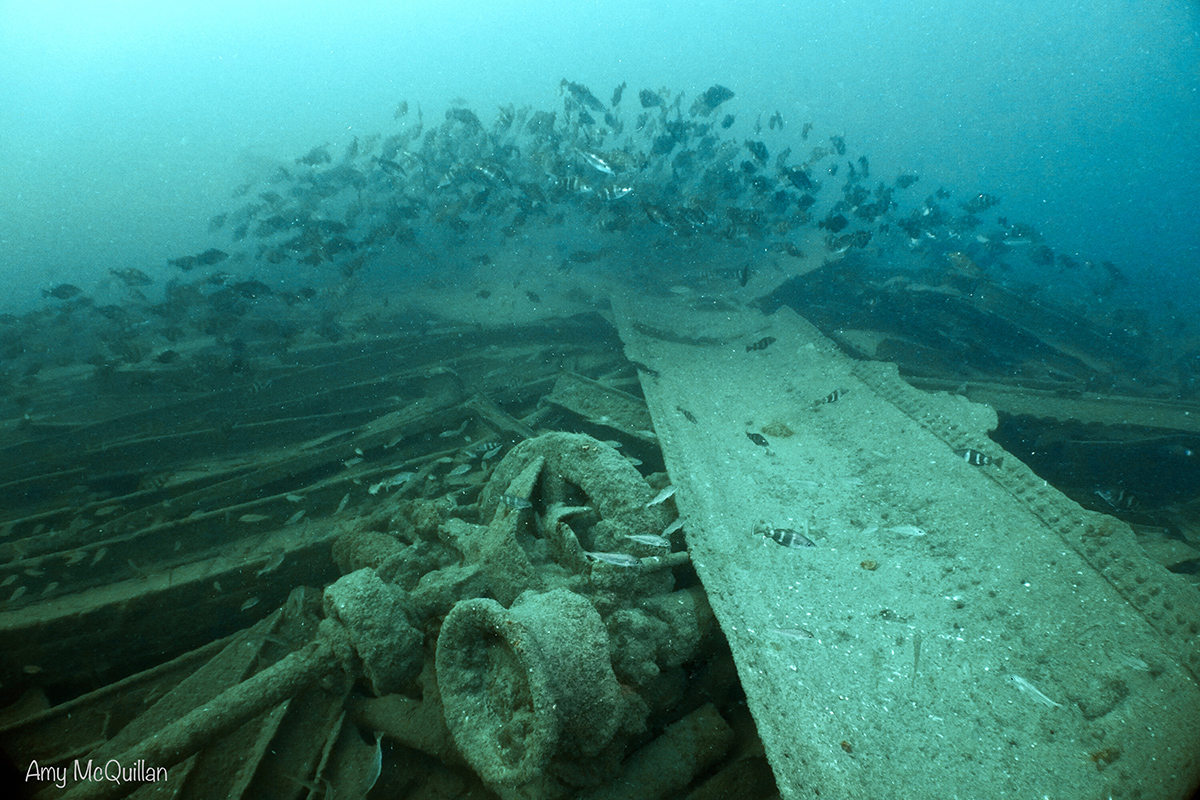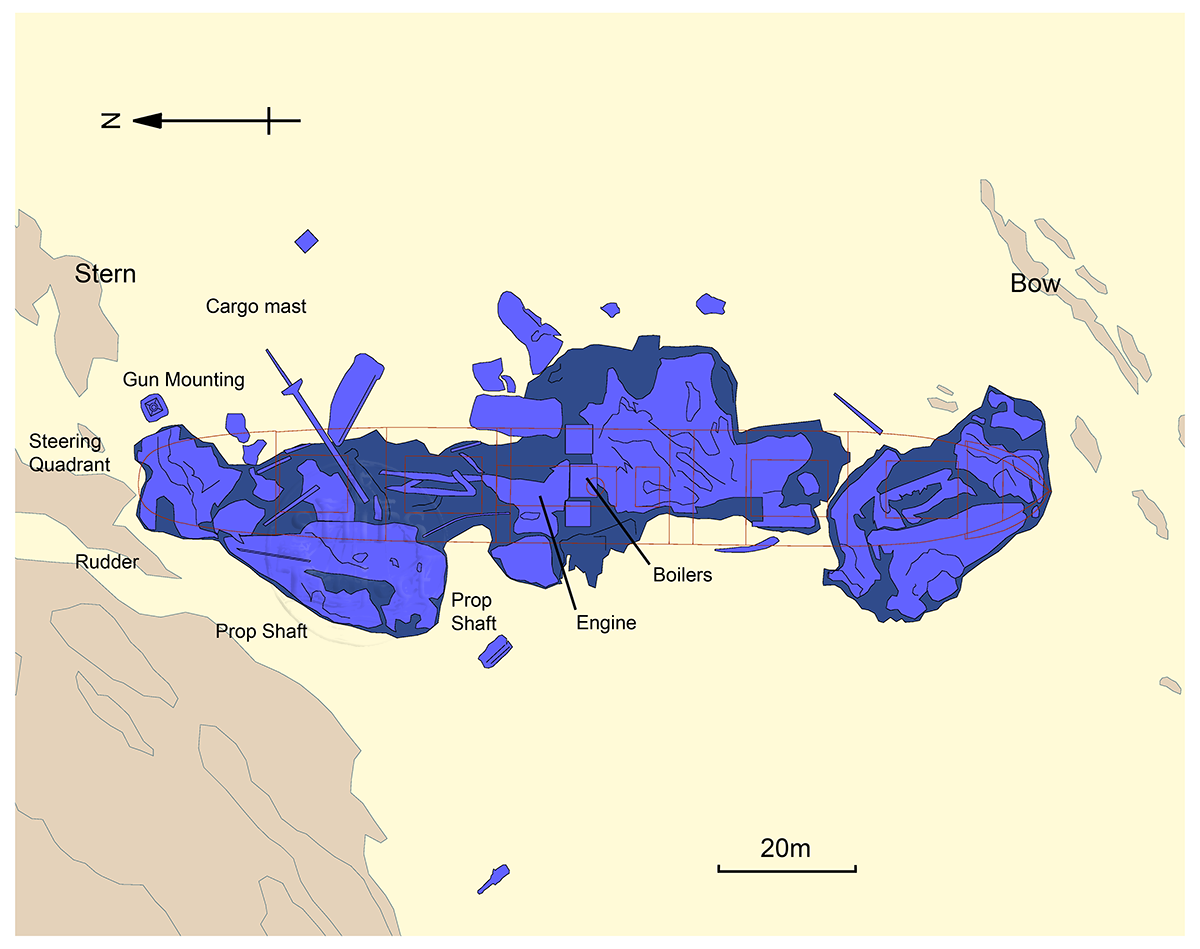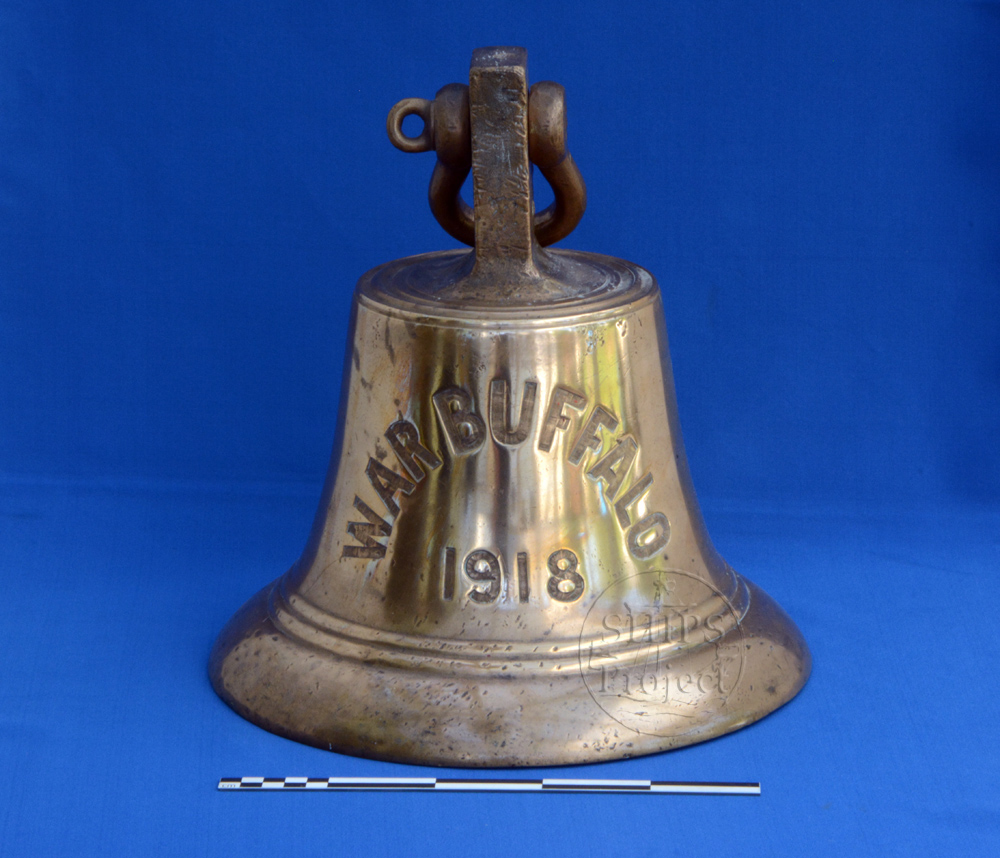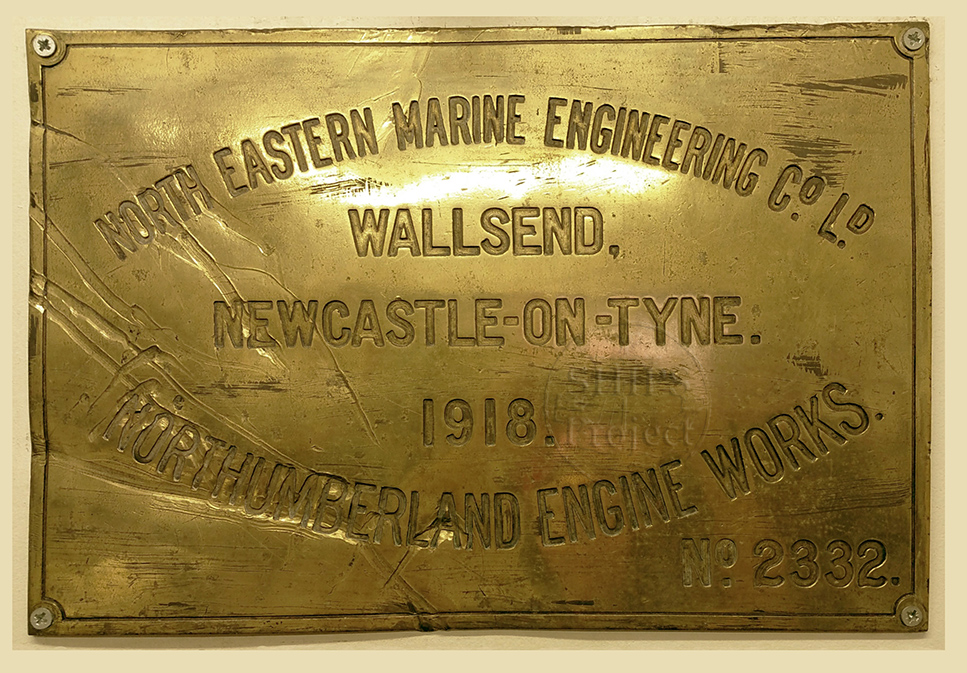Not Set
The SS Persier was sunk by a torpedo in 1945 off the Eddystone.
Type
Steamship
Location
Bigbury Bay
History
The S.S. Persier began life in June 1918 as the War Buffalo, built in Newcastle by the Northumberland Ship Building Company. A 122m (400ft) long World War 1 British Standard Class B ship with a beam of 15.9m (52.3ft), she drew 5228 tons and had a 517hp triple expansion steam engine fed by three boilers. The ship was later sold to the Belgium Maritime Company where she was renamed Persier, making 74 voyages between 1918 and 1939.
In 1940, the Persier took part in the evacuation of Dunkirk and later in the year she was badly damaged after two bombs from enemy aircraft exploded near her stern while at anchor in Oban, Scotland. The extent of the damage was not realised at the time but showed up when she was on her way back from the United States in February 1941 loaded with steel, she fell back from her convoy, the cargo shifted and she eventually went ashore near Hjorleifshodi in Iceland. Once ashore the Persier was refloated and taken to Reykjavik, placed on Kleppsvik Strand but was insufficiently supported and broke her back. In February 1942 she was again refloated and beached, refloated again then towed to the Tyne river in June 1942 where she was repaired, close to the shipyard where she was built. It looked as though this ship would end her career in 1944 when she was selected to be a blockship to be used as part of a temporary harbour for the Normandy landings. She was taken to the Clyde and prepared; all usable fittings were removed, openings cut in the bulkheads and sections packed with explosives, however at the last minute she was granted a reprieve and was put back into service.
Her final voyage began on the 8th February 1945, leaving Cardiff with convoy BTC65. Her master was E.S. Mathieu, she had a crew of 64 and a cargo of foodstuffs bound for Belgium including 2200 tons of soap, also on board was the convoy Commodore Edmund Wood and his three signalmen. The ship was armed with five 20mm Oerlikon anti-aircraft guns and one 4in. gun on her stern and she carried two British and five Belgian DEMS crew to man them.
The convoy was heavily delayed by the weather and did not reach the Eddystone until the 11th February, with ten ships spread over 10 miles of sea with a corvette in the lead and the Persier in the stern. Nearby was the type VIIC/41 U-Boat U-1017 under the command of Oberleutnant Riecken. At 17:20 the wind was blowing force 7-8 and the Persier was making 7 knots through big seas when the Commodore received a report that a periscope had been sighted, an explosion away from the convoy off to port was then thought to be a prematurely exploding torpedo. A second torpedo missed the stern of the Persier but at 17:25 a third one struck hold No# 2 on the port side, No 2 hatchway was stove in and she quickly developed a list to port.
The ship remained afloat but appeared to be sinking, darkness was coming on, the weather was bad and all her lights had failed, so the captain and crew abandoned ship at 18:25. However a faulty valve caused the engines to restart, turning the huge propeller causing damage to two of her lifeboats that were under her stern. The valve was secured but a nearby depth charge from the HMS Cornelian set the engine running again. The survivors were rescued by the ships Bunker Force, HMS Cornelian and SS Gem but twenty people were lost including Commodore Wood. The Persier continued towards shore despite the damage and disappeared into the darkness, tugs searched for her but she was not to be found.
The wreck was eventually located by Colin Hopkins and three others in May 1969 when they were diving a snag reported by a friend who was a fisherman. She was found largely intact with her 4 in. gun on the stern and two machine guns on the bridge. In May 1970 her bell was recovered, carrying the name ‘War Buffalo’, confirming that this was the last resting place of the S.S. Persier. In June the wreck was bought for £300 and since then the guns, propeller and much of the non-ferrous metal has been salvaged. Part of the cargo of 2200 tons of soap was recovered by divers, see 10A04 Soap Box ![]() .
.
The Gairsoppa, ex S.S War Roebuck is a sister ship of the Persier and has been the subject of a salvage operation by Odyssey Marine Exploration where they recovered 48 tons of silver bars.
Not Set
Located midway between Plymouth and Salcombe, the Persier can be dived at any state of the tide with only minimal current. The hull rests on the sand by a reef to the north with her shallowest part at 24 metres plus tide height, this makes the wreck an ideal Nitrox dive to give you a little extra time to explore. The whole wreck has collapsed to port with the bow pointing to the south, so the western side of the wreck is mainly hull plates and the eastern side mainly deck and upperworks. Try to shot the dive at her boilers which stand proud of the seabed. Just to the north is the remains of her collapsed engine leading to the thrust bearing and propeller shaft. The shaft tunnel used to be accessible but has now collapsed along its length with the prop shaft inside, at the stern the propeller has been salvaged but the rudder and steering quadrant can still be seen. Schools of bib and pollack populate the wreck and friendly crabs poke out from all areas.
Last updated 31 Jan 2024
Information
Type:
WW1 British Standard Class B steamship
Date Built:
1918
Date of Loss:
1945
Manner of Loss:
Torpedoed
Outcome
Foundered, partly salvaged
Builder:
Northumberland Ship Building Company
Official Number:
31193
Length
122m (400ft)
Beam
15.9m (52.3ft)
Draught
8.7m (28.5ft)
Construction
Steel, riveted
Propulsion
Steam, 517hp triple expansion, three boilers
Tonnage
5228 tons
Nationality
Greece
Armament
One 4in. gun on her stern, five 20mm Oerlikon anti-aircraft guns
Crew
64
Master
E.S. Mathieu
Owner
Belgium Maritime Company
Reference
NMR 832194, UKHO 18119
.
Not Set
Leave a message
Your email address will not be published.
Click the images for a larger version
Image use policy
Our images can be used under a CC attribution non-commercial licence (unless stated otherwise).


